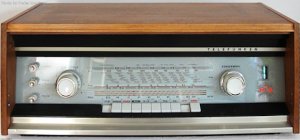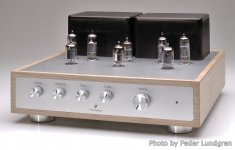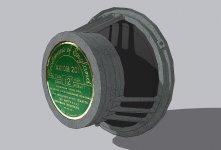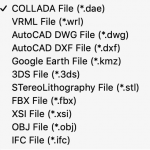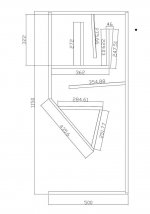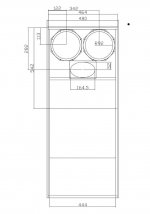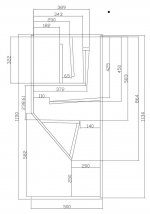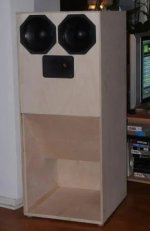Wow, thank you for your very detailed answers!!
1669El – I considered the silverhight but am leaning towards an Elekit 300B, the idea being to get maximum bang for the buck.
Thoglette – your broad brush is very interesting. Again, being budget oriented, I had listened to the NAD you mentioned but... wait! Did you mean "the" NAD 3020? The old one? Or the new one?
Again - thank you for such a detailed answer! I am likely to stay with this line of speakers but *perhaps* have two amps for different kind of music (and take the WAF hit like a man). God help me.
1669El – I considered the silverhight but am leaning towards an Elekit 300B, the idea being to get maximum bang for the buck.
Thoglette – your broad brush is very interesting. Again, being budget oriented, I had listened to the NAD you mentioned but... wait! Did you mean "the" NAD 3020? The old one? Or the new one?
Again - thank you for such a detailed answer! I am likely to stay with this line of speakers but *perhaps* have two amps for different kind of music (and take the WAF hit like a man). God help me.
The old one. It's a 2n3055/2n2955 pair done well, on a budget. And, at least in anglophone circles, it was a game changer.Again, being budget oriented, I had listened to the NAD you mentioned but... wait! Did you mean "the" NAD 3020? The old one? Or the new one
The new one I've not heard
On SET, my experience is that the biggest difference between most amps with the same tubes is a) the ability to drive the output grid and b) the OPT. The latter usually is a question of weight & skill and therefore money, the former of design.
Always happy to ramble one endlesslyAgain - thank you for such a detailed answer!
Only two?I am likely to stay with this line of speakers but *perhaps* have two amps for different kind of music (and take the WAF hit like a man). God help me.
Last edited:
The old one. It's a 2n3055/2n2955 pair done well, on a budget. And, at least in anglophone circles, it was a game changer.
Over this side of the pnd too. We sold 100s of them (including 7020s).
Built on a budget they do fail over time.
dave
Here is a image of my old/new Telefunken 2550 Opus rebuilt by another friend. This is now sold and playing in another home. The project was named Le Funk for teLEFUNKen.
hi 1669E, i'm in the chance to buy a telefunken opus 2550, can you tell me something about how this sounds with the goodmans axiom and if it's worth investing 400 € to get it? or is it better to look for a newer or different device?
I've always had a love for Telefunken's "steuergerat" ...
PS: lefunk...👍👍👍
€400 for a Telefunken 2550 is a bit high in price I think. If you want to keep it in original that is fine but you have to reserve som money for parts that are bad. The change from an old fine radio, the 2550, to a nice integrated amplifier was another €700 for me but the result was great. Remember it will only give you 2 x 4,5W. There is more options out there an most of the old big radios from Germany got similar nice amps. From 2550 to "Le Funk"
Attachments
3D model of the Axiom 201 "thin rib" late revision
In the meantime the pandemic rages on and it takes its toll on my psyche, so I spend my night modeling the Axiom 201 in unnecessarily intricate detail.
I meant it as a silly gift for all of you (@landrupp?) that plan on building the enclosures.
Now you can put the 201 in your model, in all its glory.
OK, to sleep now.
you can download the model in several formats here:
Goodmans Axiom 201 vintage full range loudspeaker driver | 3D Warehouse
Next: cabinet models based on the info in this thread.
In the meantime the pandemic rages on and it takes its toll on my psyche, so I spend my night modeling the Axiom 201 in unnecessarily intricate detail.
I meant it as a silly gift for all of you (@landrupp?) that plan on building the enclosures.
Now you can put the 201 in your model, in all its glory.
OK, to sleep now.
you can download the model in several formats here:
Goodmans Axiom 201 vintage full range loudspeaker driver | 3D Warehouse
Next: cabinet models based on the info in this thread.
Attachments
Thanks!
Very nice!so I spend my night modeling the Axiom 201 in unnecessarily intricate detail.
€400 for a Telefunken 2550 is a bit high in price I think. If you want to keep it in original that is fine but you have to reserve som money for parts that are bad. The change from an old fine radio, the 2550, to a nice integrated amplifier was another €700 for me but the result was great. Remember it will only give you 2 x 4,5W. There is more options out there an most of the old big radios from Germany got similar nice amps. From 2550 to "Le Funk"
Hello and first of all thank you for your reply ... unfortunately the old telefunken devices (opus & co.) Have reached very high prices, difficult to find them for little money, perhaps with a lot of patience you can find a bargain, I will continue to look at the ads every much.
Really nice your (ex) LeFunk ...
In the meantime the pandemic rages on and it takes its toll on my psyche, so I spend my night modeling the Axiom 201 in unnecessarily intricate detail.
I meant it as a silly gift for all of you (@landrupp?) that plan on building the enclosures.
Now you can put the 201 in your model, in all its glory.
OK, to sleep now.
you can download the model in several formats here:
Goodmans Axiom 201 vintage full range loudspeaker driver | 3D Warehouse
Next: cabinet models based on the info in this thread.
Hi Rokikiki
nice your 3d work, I hope it will be useful to someone who intends to do a modeling: on my behalf, I used a more modest 2d cad using the measures of the Axiom taken with care, but as said for now the project is stopped, my attention is still far from hifi.
But I congratulate you, your passion is truly admirable.
I was wondering if made a 3d modeling using Sketchup you can then export the drawings with the dimensions in 2d in other formats (autocad, basically) ... it is also essential to understand if the modeling makes sense for all axioms or if they are aimed at T&S parameters of each, which changes something in the sense of greater accuracy of the project
greetings and congratulations!
Hi Landrupp.
Regarding sketchup - it's not quite the professional powerhouse for an architect, engineer and so on. But I used it a lot in the last decade. That being said, it is a bit clumsy and the licensing scheme is not the greatest.
As far as exporting is concerned, below is a list of the formats it can output to (limted to 3D, there is also a 2D exporting function as well as an animation export possibility).
My (own) problem is that – while I know how to construct a solid in 3D, I am not even 1% a sound engineer. So, for instance, I have no idea what to do with hornresp or similar software. And even if we had the Thiele/Small data for the Axiom 201, my ignorance would still mean I have no idea how to *sonically* design the boxes.
My plan is to put a model together based on what you and 1669El have posted in this group and then hopefully get feedback.
All the best in this difficult time!
Regarding sketchup - it's not quite the professional powerhouse for an architect, engineer and so on. But I used it a lot in the last decade. That being said, it is a bit clumsy and the licensing scheme is not the greatest.
As far as exporting is concerned, below is a list of the formats it can output to (limted to 3D, there is also a 2D exporting function as well as an animation export possibility).
My (own) problem is that – while I know how to construct a solid in 3D, I am not even 1% a sound engineer. So, for instance, I have no idea what to do with hornresp or similar software. And even if we had the Thiele/Small data for the Axiom 201, my ignorance would still mean I have no idea how to *sonically* design the boxes.
My plan is to put a model together based on what you and 1669El have posted in this group and then hopefully get feedback.
All the best in this difficult time!
Attachments
My (own) problem is that – while I know how to construct a solid in 3D, I am not even 1% a sound engineer. So, for instance, I have no idea what to do with hornresp or similar software. And even if we had the Thiele/Small data for the Axiom 201, my ignorance would still mean I have no idea how to *sonically* design the boxes.
Sealed and un-damped ported boxes were sorted by Messrs Theile and Small a long time ago (noting practical limits on Q and the lack of T&S parameters around for the 201).
Planet10 has a rather good set of models for a damped ported box (Petite Onken variant) and I'd start there (in fact I did
There's another thread hereabouts on improved transmission lines, and I'd need to get some ball-park-correct T&S parameters for the 201 - like the Petite Onken one doesn't need to be ultra accurate
Finally, horns. A fraught topic but after 1,500 pages (not posts) I think I'd be safe to say that the tractix is the front horn of choice. Back horns are, again, a little more forgiving but like a transmission line (folded or nay), suppression of higher modes (both energy storage and wavefront control) is the main problem (particularly when folded).
If you want something to read, one can't go past this advice
I've got that last one and can highly recommend it.The Holland and Newell book is only suitable for experienced speaker designers who are interested in high-efficiency, high-dynamic-range studio-monitor speakers. It is not a cookbook, more a collection of good practices used in the professional world.
Haven't looked at Floyd Toole's book recently, so no recommendations one way or the other.
If the giftee is fairly new to loudspeakers, I'd recommend Vance Dickason's Loudspeaker Design Cookbook.
Last edited:
...thoglette, thourough and informative as usual, thanks!
I am proud of my skills, where I have them. But in some areas I am almost beyond help, this is how far I am from knowledge.
(for instance, I do not fully understand "noting practical limits on Q and the lack of T&S parameters around for the 201").
Furthermore, am interested in your suggestion regarding the Petite Onken in the AxiOnken version. It is the one that is present (in white finish) in this very thread.
I tried to find some data about how deep the bass might go on that construction but, with so few built around the Axiom 201 (apparently) there is meager info on them, apart from this thread.
I am proud of my skills, where I have them. But in some areas I am almost beyond help, this is how far I am from knowledge.
(for instance, I do not fully understand "noting practical limits on Q and the lack of T&S parameters around for the 201").
Furthermore, am interested in your suggestion regarding the Petite Onken in the AxiOnken version. It is the one that is present (in white finish) in this very thread.
I tried to find some data about how deep the bass might go on that construction but, with so few built around the Axiom 201 (apparently) there is meager info on them, apart from this thread.
Planet10 has a rather good set of models for a damped ported box (Petite Onken variant)
A variant as in it looks like an Onken, but the tuning is different as are a few other details.
(the big ones)
dave
Dave, looks great.
"Someone" is watching over my shoulder and has her oppinion about the looks. ;-)
Therefore - a question: I take it that the angled front edges are an aesthetical factor only and they could in theory be flat as well. By that I mean the surfaces with the five vents being flush with the front surface (probably with a corresponding shortening of the hidden tunnels, as this would lenghten them by a small fraction.
"Someone" is watching over my shoulder and has her oppinion about the looks. ;-)
Therefore - a question: I take it that the angled front edges are an aesthetical factor only and they could in theory be flat as well. By that I mean the surfaces with the five vents being flush with the front surface (probably with a corresponding shortening of the hidden tunnels, as this would lenghten them by a small fraction.
alternative horn enclosure...
On a different note, since we are discussing suitable enclosures for the Axiom 201, I found a thread on a South African DIY forum, with an interesting contribution from Ingvar Ahlberg. I have no way to verify how promising (or not) is this direction. In general the avforum community is a competent and humorous bunch.
I quote the relevant part below.
The whole exchange is available here.
Ingvar's project looks like an interesting option, with two caveats:
1. lack of third party oppinion on an implementation (the Chris Templer variant and the Onken in the photo posted by Dave above have been listened to and described by forum members)
and
2. in mr. Alhberg's project there still seems to be a tight spot for the driver if an Axiom would replace the Beyma's, potentially forcing it all the way to the top of the cabinet (not a sonic problem I assume, just an aesthetic one).
On a different note, since we are discussing suitable enclosures for the Axiom 201, I found a thread on a South African DIY forum, with an interesting contribution from Ingvar Ahlberg. I have no way to verify how promising (or not) is this direction. In general the avforum community is a competent and humorous bunch.
I quote the relevant part below.
The whole exchange is available here.
If You decide to go the horn route with those Axioms, please consider this, will be far superior.
Here with 2 8" drivers, same cone area as one 12" so works exactly the same way.
A bit cumbersome to build but, i think, worth every hour. Also larger than the Axiom horn but still tiny.
I originaly designed them for the Faital Pro 8PR200 but they also have been bult with the 12" Beyma Liberty8 (modernised JBL e120)
Beyma 12P80Nd and with two Philips AD9710MC (old Alnico version), that was maybe the best sound for cost I´ve ever heard.
Ingvar
Ingvar's project looks like an interesting option, with two caveats:
1. lack of third party oppinion on an implementation (the Chris Templer variant and the Onken in the photo posted by Dave above have been listened to and described by forum members)
and
2. in mr. Alhberg's project there still seems to be a tight spot for the driver if an Axiom would replace the Beyma's, potentially forcing it all the way to the top of the cabinet (not a sonic problem I assume, just an aesthetic one).
Attachments
I take it that the angled front edges are an aesthetical factor only and they could in theory be flat as well..
The big chamfer is very functional. The Axi-Ken is a rectangular MiniOnken, the trapezoid version takes things even further as far as diffraction signature minimization.
It can be left flat, but some changes need to be made, and the box will become more sonically visible.
dave
Having thoroughly demolished the hi-fi pretensions of the box-shaped speaker,
To quote Lynn Olsen in talking about the Ariel
That's how I ended up with a set of Ariels rather than Altec VOTT A7s The 201's will be an out-of-sight system
The 201's will be an out-of-sight system
On the other hand TubeLab managed to get some Very Large Cabinets by hiding the the 15" drivers in vintage furniture that Mrs. TubeLab fancied.
Ill see if i can find the thread...
The big chamfer is very functional.
To quote Lynn Olsen in talking about the Ariel
As I mentioned at the beginning of this article, a box is a terrible shape for a loudspeaker. After all, a loudspeaker operates at the speed of sound (not a figure of speech), and what was the last time you saw an airplane that looked like a box? Just like an aircraft, sharp edges and bumps create shockwaves at the rough spots, and these shockwaves create drag in an aircraft and secondary reflections in a loudspeaker. Since these reflections have delays comparable to the delays created by the head and shoulders of the listener, the edge reflections confuse the stereo image, flatten the depth perspective, and create listening fatigue.
The truly correct approach is to use gently sweeping aerodynamic shapes, resulting in speaker cabinets with large-radius curves at least equal to the radius of the midrange cone. Gee, you might think, nobody does this. Why? Cost and cosmetic expectations. That's all.
In aircraft, safety and performance rule, dictating the shape of the aircraft. After all, badly designed aircraft waste fuel and crash; by comparison, badly designed loudspeakers only destroy the sense of musical realism and beauty.
Having thoroughly demolished the hi-fi pretensions of the box-shaped speaker, here I go telling you to go ahead and build one.
There's a KPI called SAF (Spouse Acceptance Factor)"Someone" is watching over my shoulder and has her oppinion about the looks. ;-)
That's how I ended up with a set of Ariels rather than Altec VOTT A7s
On the other hand TubeLab managed to get some Very Large Cabinets by hiding the the 15" drivers in vintage furniture that Mrs. TubeLab fancied.
Ill see if i can find the thread...
Last edited:
Don’t know what you are trying to point out with Lynn’s words, but for a chamfer/roundover to be effective into the lower frequencies, it needs to be fairly large.
The chamfer typically seen on the rectangualr miniOnkens is equivilent to about a 3” radius, the teapezois miniOnken takes things a step further extending the “chamfer to the sides of the cabinet to approximate a teardrop shape in plan. These chamfers get the edges to the point where the fall away at teh bafflre edges is large enuff.
The difference between the rectangular & trapezoidal miniOnkensd is audible with the right material (in a system that does not lose the critical imaging/space information).
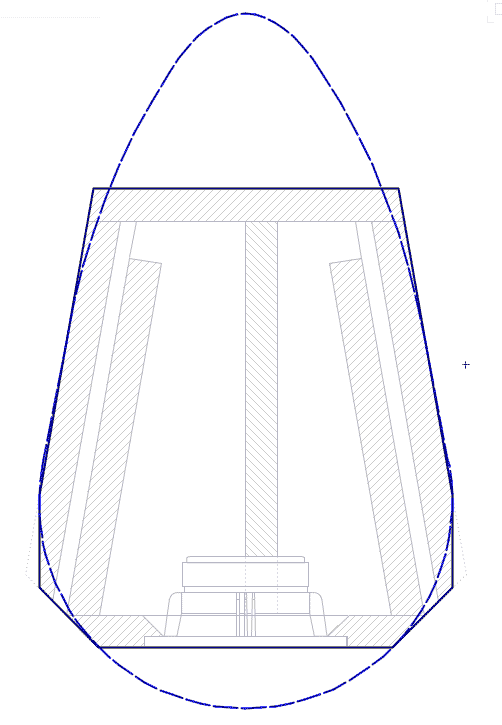
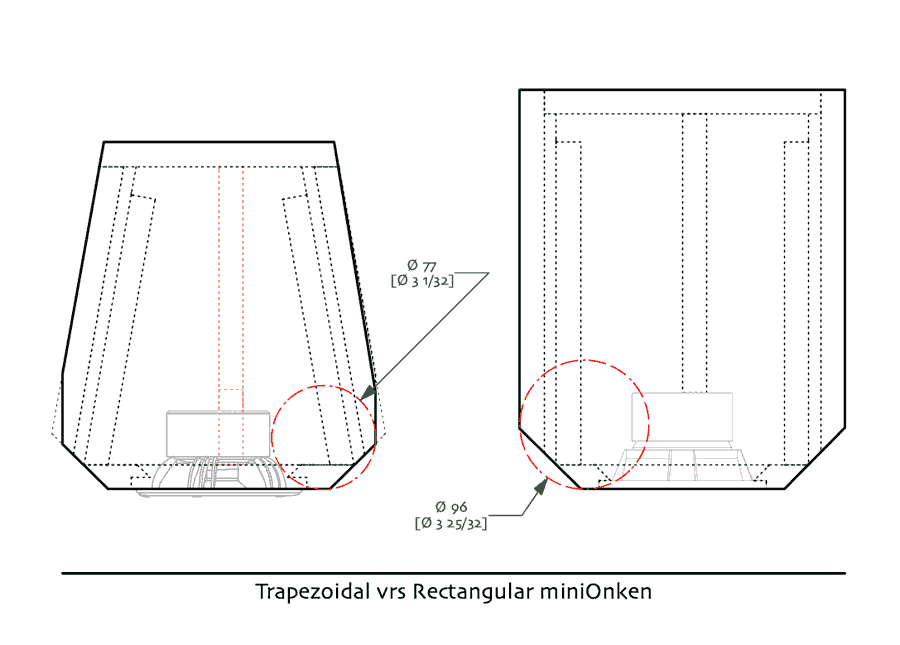
dave
The chamfer typically seen on the rectangualr miniOnkens is equivilent to about a 3” radius, the teapezois miniOnken takes things a step further extending the “chamfer to the sides of the cabinet to approximate a teardrop shape in plan. These chamfers get the edges to the point where the fall away at teh bafflre edges is large enuff.
The difference between the rectangular & trapezoidal miniOnkensd is audible with the right material (in a system that does not lose the critical imaging/space information).


dave
- Home
- Loudspeakers
- Full Range
- Cabinets for Full Range Goodmans Axiom 201
